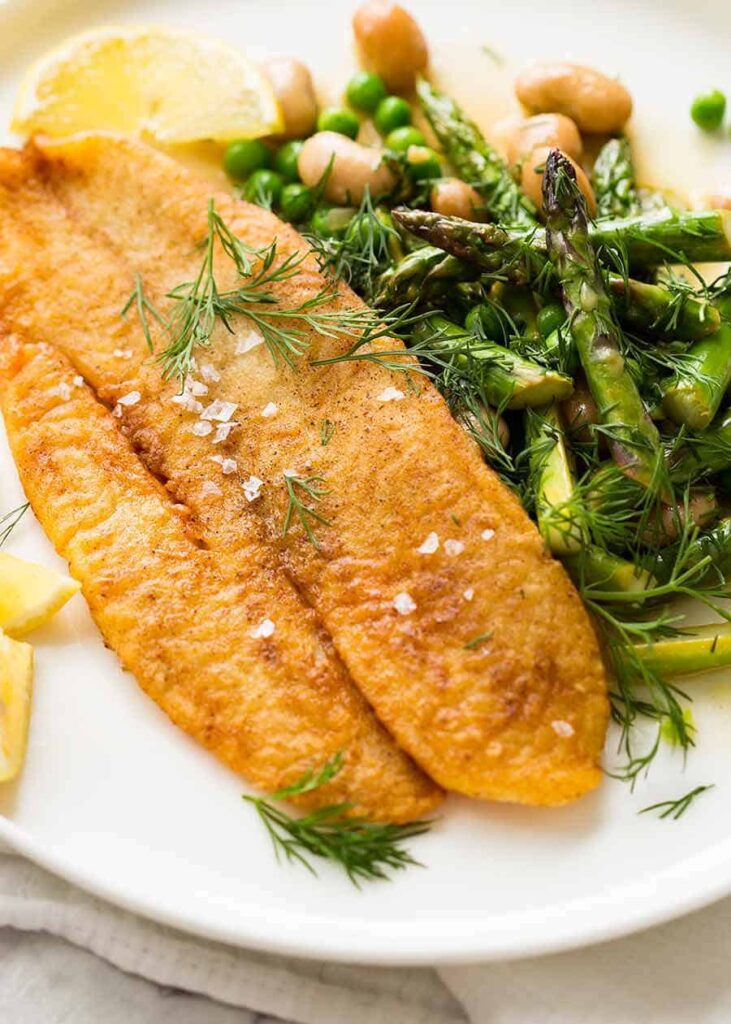Pan-frying can be challenging but very satisfying for a chef. The trick to perfect pan-frying is to achieve the right level of crispiness and texture in the food. One must start by selecting the right pan and oil that ensures even heat distribution and temperature control. Next, it is important to prep the ingredients appropriately and ensure that the pan’s temperature is optimal. The ingredients need to be carefully added one layer at a time, and flipped over precisely to get an even sear on both sides. Finally, the food should be drained on paper towels to soak excess oil and let it rest for several minutes before serving.
The Secret to Perfect Pan-Frying: Tips and Techniques for Crispy, Golden Food
Whether you’re a beginner cook or a seasoned pro, there’s nothing quite like the satisfaction of crispy, golden pan-fried food. From perfectly seared steaks to crispy-skinned chicken, the art of pan-frying is all about achieving just the right level of crispiness and texture. If you’re searching for the secret to perfect pan-frying, read on for tips and techniques that will help you achieve delicious results every time.
Choosing the Right Pan and Oil
Before you even start cooking, it’s important to choose the right pan and oil for pan-frying. A heavy-bottomed skillet or frying pan is best for even heat distribution and temperature control. Cast iron, stainless steel, or nonstick pans are all good options. You should also choose an oil with a high smoke point, such as canola, peanut, or vegetable oil, which can withstand high temperatures without burning or smoking.
Prepping Your Ingredients
To ensure your food cooks evenly and crisps up nicely, it’s important to properly prep your ingredients. For meats, pat them dry with paper towels to remove any excess moisture, which can prevent a good sear. For vegetables, slice them into even pieces or dice them into small chunks that will cook quickly and evenly. Be sure to season your ingredients with salt and pepper before cooking.
Getting the Right Temperature
One of the most important aspects of successful pan-frying is getting the right temperature. If your pan is too cold, your food will stick and won’t crisp up properly. If it’s too hot, your food will burn on the outside before cooking through on the inside. A good rule of thumb is to let your pan heat up over medium-high heat for a few minutes before adding your oil and ingredients. You can also use a thermometer to ensure your oil is between 350 and 375 degrees Fahrenheit, which is the ideal range for pan-frying.
Adding Your Ingredients
When it’s time to add your ingredients to the pan, be sure to do so carefully and in a single layer. Overcrowding the pan can cause your food to steam rather than fry, resulting in a soggy texture. If you’re cooking multiple batches, be sure to wipe out the pan between each batch and let it reheat before adding more oil and ingredients.
Mastering the Flip
One of the trickiest parts of pan-frying is achieving that perfect flip to get an even sear on both sides of your food. When your food is ready to flip, use a spatula or tongs to gently lift it, being careful not to break the crust or coating. If the food sticks to the pan, it’s not ready to flip yet. Once you’ve flipped your food, try not to move or touch it too much, as this can prevent it from crisping up properly.
Draining and Resting
Once your food is cooked to perfection, it’s important to remove it from the pan and let it drain on paper towels. This will help absorb any excess oil and prevent the texture from becoming too greasy. It’s also a good idea to let your food rest for a few minutes before serving, which allows the juices to redistribute and the crust to set.
Experimenting with Coatings and Flavors
While the classic breaded or battered coating is always delicious, there are plenty of other ways to add flavor and texture to your pan-fried dishes. Try using different spice blends, marinades, or rubs to season your ingredients before cooking. You can also experiment with different coatings, such as panko breadcrumbs, cornmeal, or finely ground nuts, for a unique twist.
Conclusion
With the right tools, techniques, and ingredients, anyone can achieve perfectly crispy, golden pan-fried food. By following these tips and tricks, you’ll be well on your way to creating delicious dishes that are sure to impress. So heat up your pan, choose your oil, and get ready to fry up some culinary magic!
